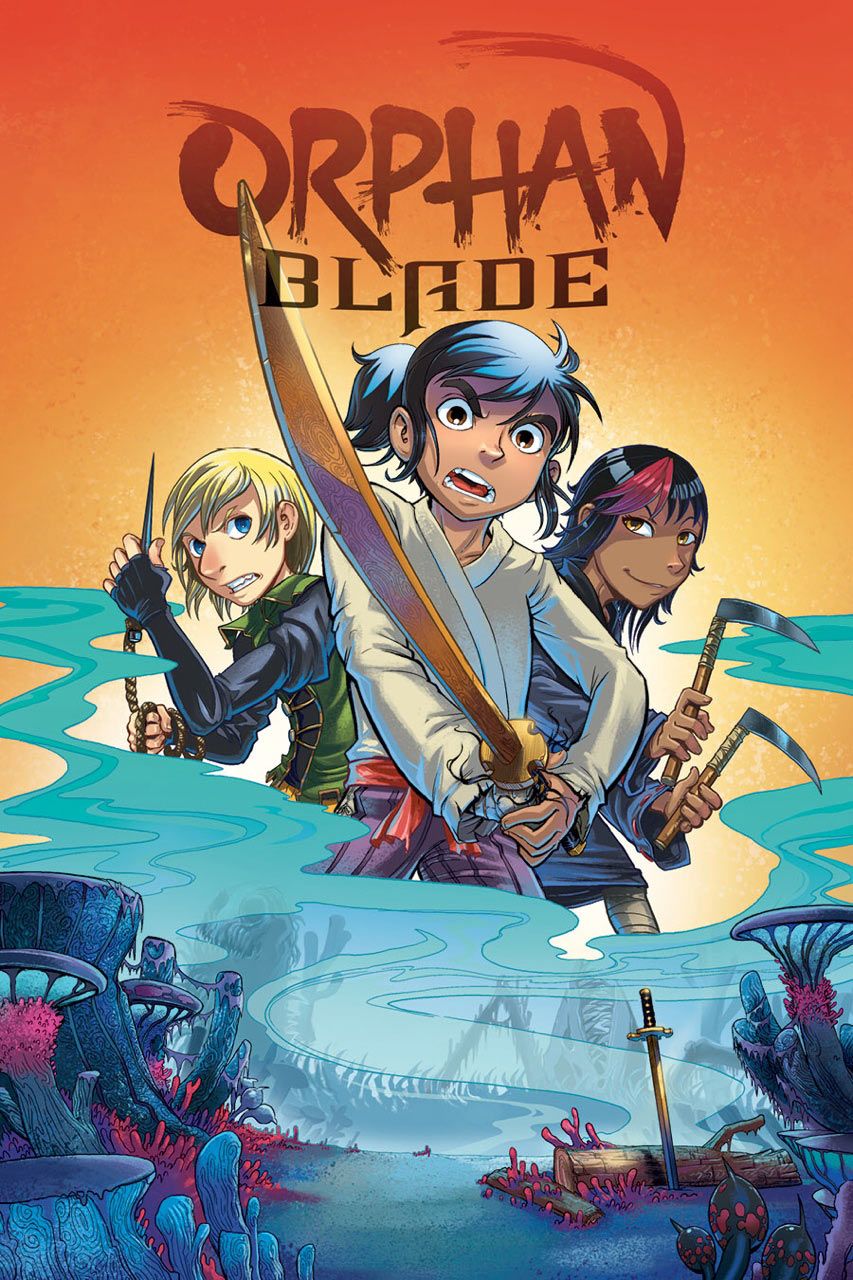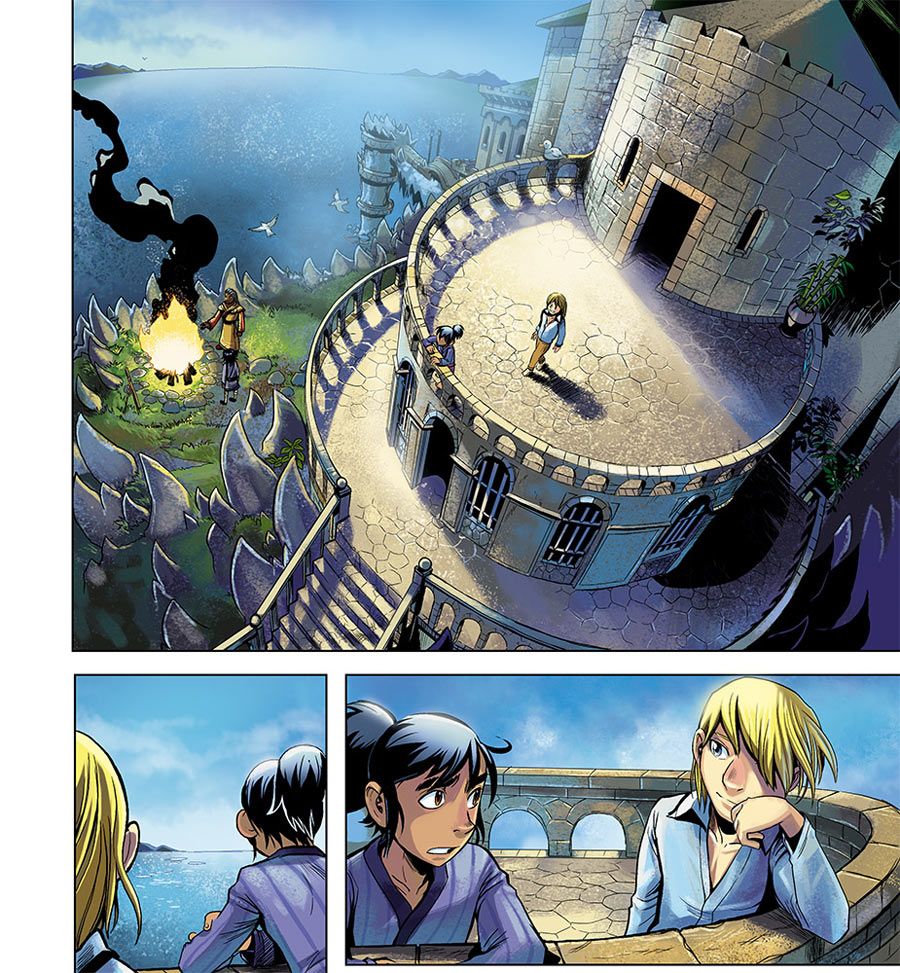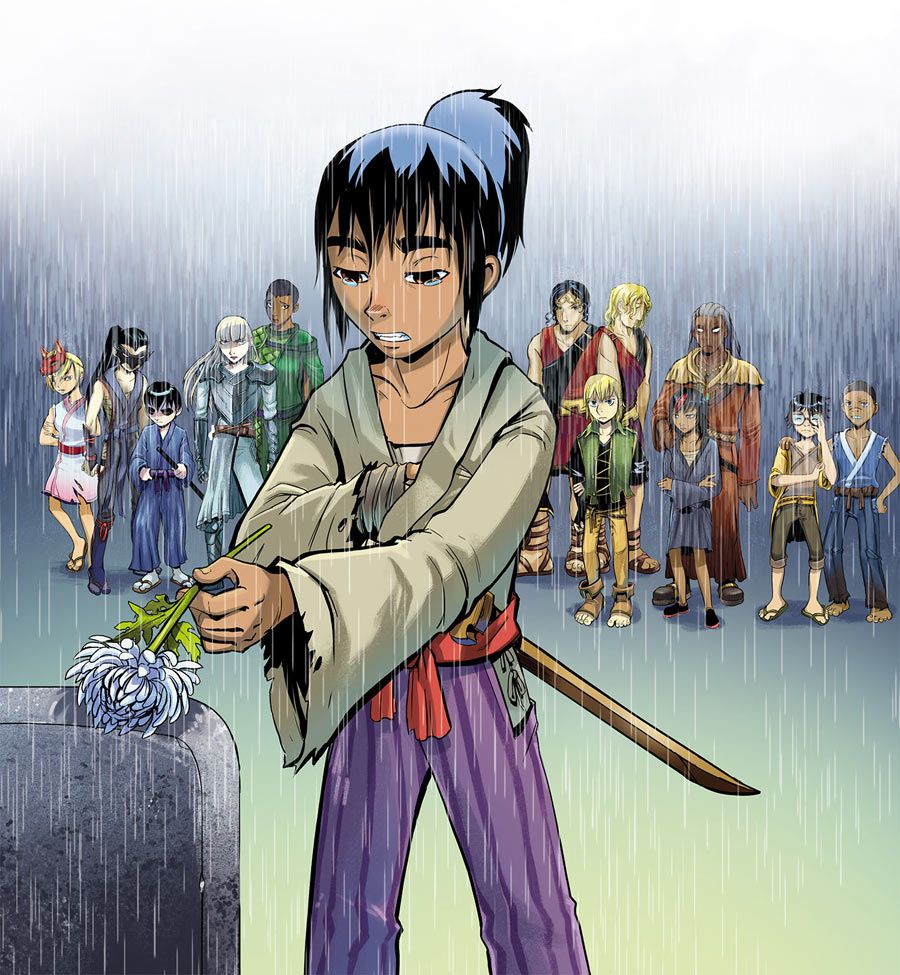Artist Jake Myler is setting out into new territory with "Orphan Blade," out now from Oni Press. Though this is his first original-to-comics project, Myler is not new to the scene -- his work as a penciller and colorist has appeared in many books from, BOOM! Studios and Archaia Press, including "Bravest Warriors," "Fraggle Rock" and "Finding Nemo."
Written by Nick Almand, who passed away last fall at age 30 due to cancer, "Orphan Blade" tells the tale of a young swordsman and his friends fighting to survive against monstrous forces. With a manga-inspired aesthetic, LGBT-friendly message and action-packed plot, the book's appeal is broad. Myler spoke with CBR News about what went into creating "Orphan Blade," the progressive message of the story and the pride he has in having had the chance to work with Almand to bring the comic to life.
CBR News: Jake, the art in "Orphan Blade" is clearly inspired by manga and Japanese art, but it's also got its own unique twist. What other artists have influenced you? Any manga in particular, and what else have you brought into it?
Jake Myler: That's always an interesting question! My list of influences is probably always changing. I'm sure a little bit of Katsuhiro Otomo of "Akira" fame is in there. Also, Takeshi Obata, illustrator of "Death Note" and "Bakuman" is a level I try to strive for. And for "Orphan Blade," the author Yuhki Kamatani, who created "Nabari no Ou" -- a ninja manga set in modern times -- was something I felt inspired by. Paul Pope is a huge, lifelong influence on me since my youngest days and I'm still a huge fan of his work.
Can you talk about the LGBT aspect of the book?
I knew from the beginning that Nick Almand wanted to write an action comic that could be relatable and enjoyable to everyone. Nick also told me that when he was growing up as a gay kid, he found it super rare to find any examples of gay characters in media, especially anything that a kid would see, and even more impossible to find one who was also a minority. And then, such a character was absolutely never the main character.
Nick wanted to change that in this book. In "Orphan Blade," Hadashi, the main character, is gay, and he isn't punted off to be someone's friend, or coming in from the sidelines just to say something witty for comic relief. Hadashi also isn't a character in the stereotypical gay-tragedy. He is the hero of this story, he's trying to make it through the dangers thrown his way, and like any character in any story his orientation just happens to be a small portion of the total character!
Hadashi happening to be gay and also being front and center is something that I hope shows up with more characters, more often, in general. Not just with sexuality but also gender, race and religion, people with disabilities, everything! Diversity is good and to the kid who picks up a book and sees a little bit of themself reflected on the page, it immediately says to them that they are people and they matter, and being exactly who they are is OK.
So expect a little bit of budding romance, but it's 99 percent action. It's teenagers who are fighting for their lives. There's not that much downtime before things get dangerous again!
Before "Orphan Blade," most of your work was with licensed properties: "Fraggle Rock," "Finding Nemo" and a bunch of other stuff. What have you found to be different between working with licensed characters and designing a world from the ground up?
Working on an original property where nothing has been laid out yet is definitely very freeing! But it also means that a ton of extra planning goes into it. For instance, "Orphan Blade" is set in a fantasy world only loosely based on 1600s Japan -- except in this case, a Japan (and the whole world for that matter) that has been ravaged by kaiju! Figuring out how people live in this strange world, what monsters look like, everything; it all has to be thought out. I guess there's a lot more concept work involved before I can even start drawing a page.
For properties like "Fraggle Rock" and "Finding Nemo," the groundwork is already there. I just have to make sure that I can draw things to the guidelines that have already been laid out for me, and make the world feel authentic to the property! Although, sometimes making sure characters from those licensed properties are on-model can be just as time consuming!
What was it like to work with Nick Almand? Since his passing, has "Orphan Blade" taken on any special significance to you?
Nick was totally great! He was a really considerate writer. He always took my feedback into account and wove it into the story, as well as giving me lots of feedback on the art whenever I sent anything to him. I think he tried to make it a point to talk to me every day of those three years that we worked on the book and check in with how things were going, so we ended up becoming really good friends and chatted a lot. So it was especially tragic in those last months when Skype conversations happened less and less and then stopped altogether. And then the final six months or so of the project, after Nick had passed away, I'd finish a page and think: "Oh I should show Nick, see what he thinks of this page," and then I'd realize he wasn't there.
I am so glad that this book is going to be out there for people to read, which is really Nick's dream. But it's also very bittersweet because I wish he could have seen it finished. I can say with confidence that he'd be proud of it, though.
Is there anything else about Orphan Blade (or other upcoming projects!) that you want to talk about?
I hope that people really just have fun reading it. Just be prepared for some action that doesn't pull any punches whatsoever! And as far as next year, I gotta do one of those things that you probably hear a lot from artists and writers in the interviews on CBR: I'm working on a big project that I can't tell anyone about yet. But I'll probably be dropping hints over on my Tumblr
"Orphan Blade" is available now from Oni Press.




